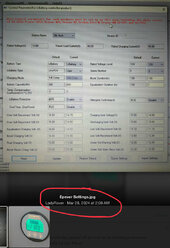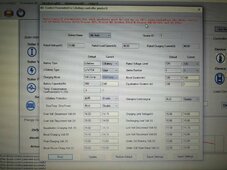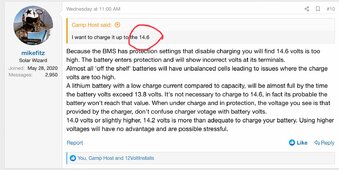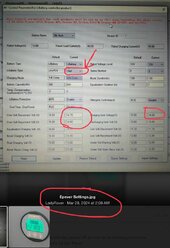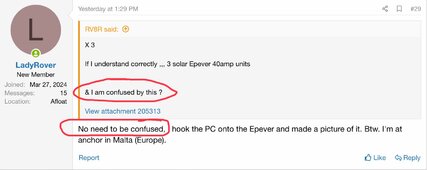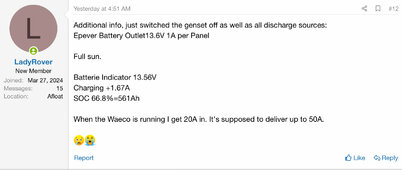RV8R
Solar Enthusiast
I think you quite possibly have more than 1 issue;
Diagnostics with electrical systems with multiple issues can be challenging.
The other thing with electrical systems is it all seemingly is good until it isn’t; this is important to keep in mind when you finally discover “hey my kettle isn’t working the way it use to”.
I am a novice, but I try to understand “standards”, why, and for the most part follow them.
In Aviation things generally happen where “multiple issues” are the root factors. Your kettle issue could be similar;
Disassembled system for shipping
Reassembled
Energy drained from batteries
Energy put back into batteries
Existing system might have had issues undetected prior to disassembling ( 5 lugs on the battery positive terminal is an indication of this & so is the Waeco & possible the non-communication Epever as I am not familiar with your equipment ).
No history & if you lack details of data from how it use to operate when “all was seemingly good”, it will just make it a little harder to diagnose.
Still, from help from the forum, I’m sure you will get it sorted.
My 2 cents here is I would look a your system under 3 categories;
Charging
Batteries
Loads
I would diagnose the issues under these 3 categories.
The 1st category I would focus on is the battery; BMS, SOC, Connections, Manufacturer’s performance specifications ( charge / discharge ).
2nd I would look at the chargers
3rd I would look at the loads
Diagnostics with electrical systems with multiple issues can be challenging.
The other thing with electrical systems is it all seemingly is good until it isn’t; this is important to keep in mind when you finally discover “hey my kettle isn’t working the way it use to”.
I am a novice, but I try to understand “standards”, why, and for the most part follow them.
In Aviation things generally happen where “multiple issues” are the root factors. Your kettle issue could be similar;
Disassembled system for shipping
Reassembled
Energy drained from batteries
Energy put back into batteries
Existing system might have had issues undetected prior to disassembling ( 5 lugs on the battery positive terminal is an indication of this & so is the Waeco & possible the non-communication Epever as I am not familiar with your equipment ).
No history & if you lack details of data from how it use to operate when “all was seemingly good”, it will just make it a little harder to diagnose.
Still, from help from the forum, I’m sure you will get it sorted.
My 2 cents here is I would look a your system under 3 categories;
Charging
Batteries
Loads
I would diagnose the issues under these 3 categories.
The 1st category I would focus on is the battery; BMS, SOC, Connections, Manufacturer’s performance specifications ( charge / discharge ).
2nd I would look at the chargers
3rd I would look at the loads



